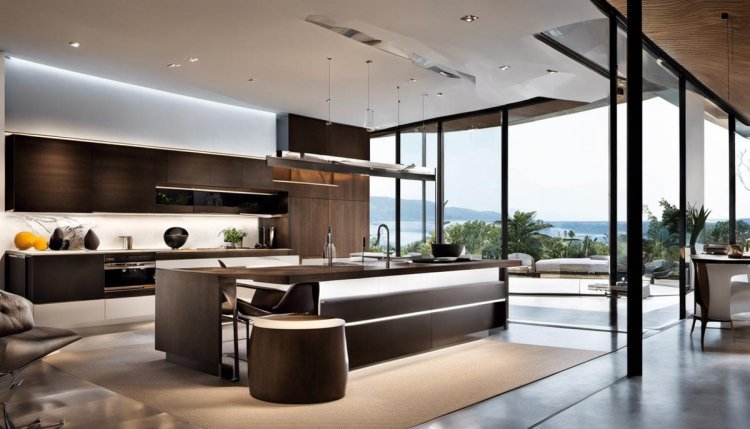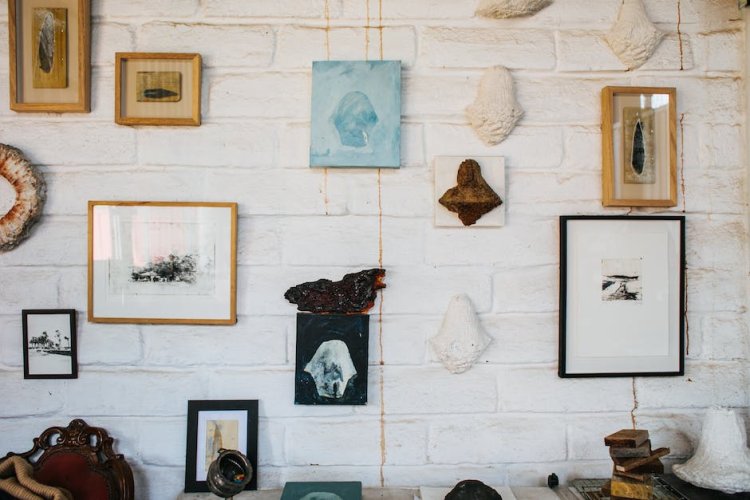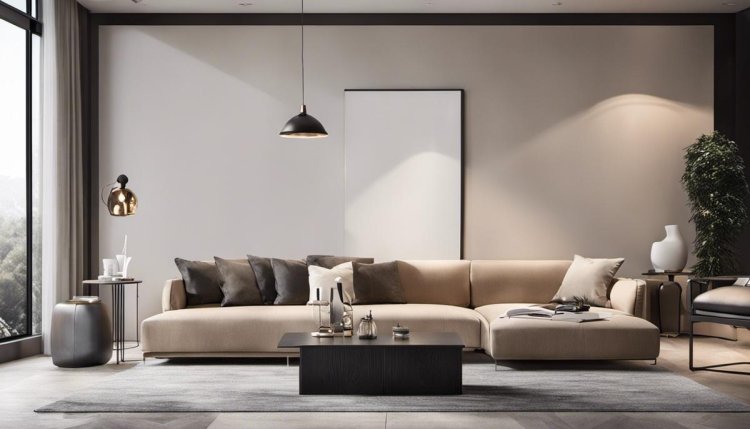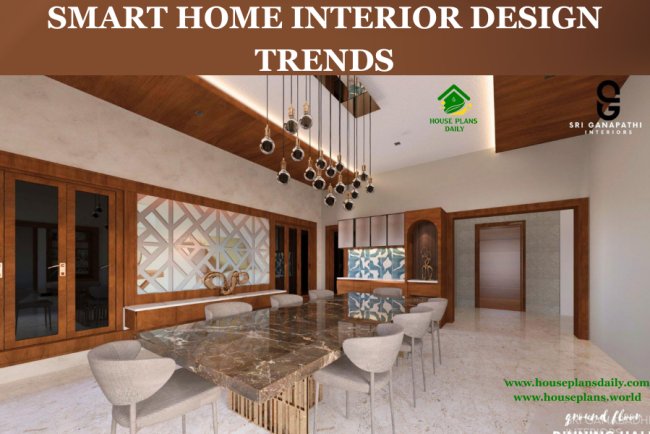Modern Interior Design Ideas
Discover the latest modern interior design ideas to transform your home into a stylish and inviting space. Explore our website for more useful articles on home decor and design.
In a world where styles change and evolve rapidly it is imperative to stay abreast of the innovations and trends that define the current interior design landscape. This creative terrain, which combines aesthetics and functionality, is not only concerned with creating beautiful spaces, but also seeks to satisfy the diverse requirements and preferences of modern users.
In addition to looking at styles, colors and materials that are setting the pace, it also addresses how emerging technologies are making their way and how digitalization is reshaping the field of interior design. Equally, or perhaps even more important, is the vital role of marketing and finance in this sector, as well as the decisive influence of a strong professional network.
Current interior design trends
Each decade has its own interior design style, redefining the aesthetics and functionality of our spaces. We will examine emerging trends that are bursting with ingenuity and innovation, revolutionizing modern interior design.
Green Spaces:
The growing awareness of sustainability and environmental care has made ‘Green Living’ the trend of the moment. Incorporating plants into interior spaces not only adds an aesthetic touch but also promotes cleaner air. Additionally, the use of eco-friendly materials in interior design is becoming increasingly popular.
Biophilic Design:
Beyond the focus on sustainability, biophilic design is the new frontier. Following the principles of biophilia, which literally translates to "love of life," this style seeks to incorporate natural elements like wood, stone, and natural light, creating a serene and tranquil environment.
Minimalist Interiors:
This trend has been on the horizon for quite some time. It is characterized by clean lines, simplicity, and a focus on the functional elements of the space. This style favors neutral colors and subtle textures to create a calm and uncluttered atmosphere.
Flexible Spaces:
Considering the ever-changing world, interior spaces have become more versatile and flexible. Modular furniture, movable walls, and open spaces are some innovations that allow individuals to adjust and adapt their spaces as needed.
Integrated Technology:
In the digital age, the fusion of technology with interior design is inevitable. From smart lighting systems to fully automated homes, technology is a valuable addition that maximizes efficiency and comfort.
Interior design is continuously evolving, driven by a blend of innovation, aesthetics, and functionality. As we are surrounded by these exciting trends, it is vital to understand and apply them effectively. This way, we can shape interior spaces that are not only aesthetically pleasing but also sustainable, healthy, and truly human-centered. If you can understand and apply these trends well in your projects, you will be at the forefront of interior design.

Innovation in Interior Design Products and Services
Integrated Technology:
Brands and interior designers are constantly seeking ways to incorporate technology into their designs to enhance the customer experience. From app-controlled lighting systems to furniture equipped with wireless chargers and built-in speakers, technology is becoming an integral part of modern interior design.
Sustainability and Conscious Design:
The growing concern for the environment and sustainability is reflecting in the world of interior design. Designers are now considering factors such as recycling, the use of sustainable materials, and energy efficiency in their projects. Brands and designers are creating products that are not only aesthetically pleasing but also environmentally friendly.
Multifunctional Spaces:
With the rise of remote work and home education, interior spaces need to be more versatile than ever. Designers are innovating with solutions that allow spaces to serve multiple functions without sacrificing style and comfort.
Healthy Spaces:
Well-being and health are becoming a central focus in interior design. This is reflected in the choice of soothing colors, indoor plants, improved air quality, and natural light. Creating spaces that promote the mental and physical health of users is a trend that is gaining significant strength.
Online Design Services:
Brands and designers are adapting their services to the digital age, offering online interior design consultations and projects. These services allow clients to have a professional design experience from the comfort of their own homes.
Minimalism Trend:
Minimalism remains a strong trend in interior design. Designers are creating spaces that are both functional and elegant, using only essential elements. This trend is a response to the chaos and noise of the modern world, providing a tranquil and stress-free refuge.

The role of marketing and finance in interior design
Integrated technology:
In an increasingly digital world, it's no surprise that technology is making its mark on interior design. Integrated technology is revolutionizing how we interact with our living and working spaces, from app-controlled heating and air conditioning to smart home security systems and high-tech kitchens. The demand for seamless integration of technology is becoming a vital component of modern design.
Sustainability and Conscious Design:
Environmental awareness is becoming increasingly central for consumers and brands alike. The use of sustainable and recycled materials, as well as eco-friendly construction and design practices, is growing in popularity. Furthermore, conscious interior design extends to the health and well-being of occupants, with particular attention given to air quality, natural light, and microbial contagion.
Multifunctional Spaces:
Spaces that can serve multiple functions offer a practical solution to modern space challenges. From kitchens that double as entertainment areas to bedrooms that function as home offices, multifunctional spaces are an emerging trend in interior design. This approach maximizes the utility and versatility of every square inch.
Healthy Spaces:
Well-being has shifted from a luxury to a necessity, and interior design is no exception. The COVID-19 pandemic has sparked a significant interest in creating spaces that promote health and wellness. This includes designs that incorporate abundant natural light, plants, and other natural elements, as well as soothing and neutral colors that promote tranquility.
Online Design Services:
As the world increasingly moves online, so does interior design. Online design services provide a convenient and affordable way to hire an interior designer, offering digital design plans and online shopping. This business model changes the traditional paradigm of interior design, allowing a broader range of clients to benefit from personalized design.
Minimalism Trend:
Minimalist interiors are more popular than ever. This design style, known for its simplicity, neutral color palette, and absence of clutter, is highly valued by those seeking a calm and relaxing aesthetic that is also modern and sophisticated. Minimalism not only looks good but also promotes a more centered and conscious lifestyle, which can have a positive impact on overall well-being.
In short, marketing and financing strategies are playing a crucial role in shaping the success of interior design companies in today's market. As trends emerge and evolve, companies must adapt quickly to stay competitive in this dynamic sector.

The Impact of Professional Networks on the Interior Design Business
Integrated Technology:
The digital world is increasingly intertwined with reality, and interior design is no exception to this trend. Voice assistants, smart lighting, automated security, and connected appliances allow for total control of a space without lifting a finger. This means that interior designers must stay up to date with the latest technologies to effectively integrate them into their projects.
Sustainability and Conscious Design:
As concern for the environment grows, more people are looking for ways to make their homes more sustainable. Choosing eco-friendly materials and locally sourced products reduces the carbon footprint of design while creating warm spaces that have a strong connection to the environment.
Multifunctional Spaces:
In an era where many people work from home or have varied hobbies, adaptability becomes the mantra of interior design. Spaces that can transform from offices to classrooms and from gyms to guest rooms are not only smart but also highly necessary.

Healthy spaces:
Recent studies have shown that our physical environment can have a great impact on our health and well-being. Designs with lots of natural light, plants, calm colors and ergonomic furniture promote a healthier lifestyle and help improve mood and productivity.
Online Design Services:
With the democratization of technology, interior design is within everyone's reach. Online design platforms allow individuals to collaborate with a professional designer to create the perfect space without leaving their home, providing an accessible and convenient option for all.
Minimalism Trend:
Minimalist design, based on the idea that "less is more," continues to gain strength. This trend prioritizes clear spaces and functionality over visual clutter, creating serene and organized environments that particularly suit modern lifestyles.
Marketing and Financing Strategies in the Interior Design Market:
The growth and innovation in the interior design business demand equally progressive marketing and financing strategies. The adoption of digital marketing tools, the use of social media to build relationships with clients, and knowledge of new financing options are essential for maintaining relevance and competitiveness in this ever-evolving niche.
Undoubtedly, a vast professional network that fosters collaboration and the exchange of ideas will be essential for adapting, innovating, and growing in the promising field of interior design.

The path forward in interior design is paved with innovation, digitalization and constant evolution in response to changing market demands. Likewise, the presence of effective marketing and solid financial management is essential to sustain itself in a competitive environment.
However, perhaps one of the most valuable aspects to consider is the importance of a strong professional network, one that opens doors to opportunities for collaboration, exchange of ideas, and successful business practices. Because ultimately, the strength of a network of contacts and the synergy it generates can be the master piece that leads to success in interior design.













